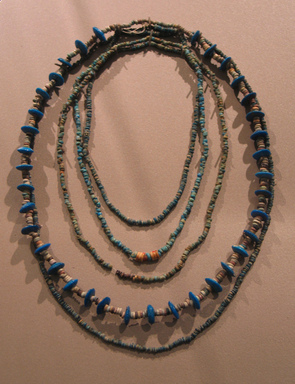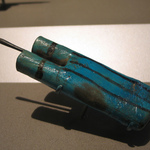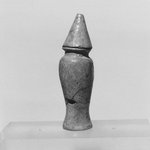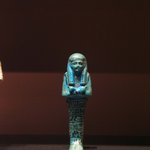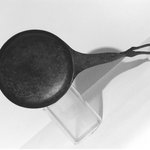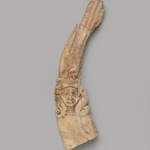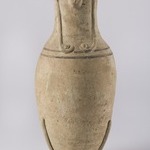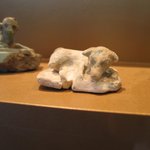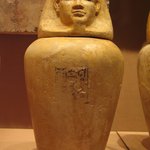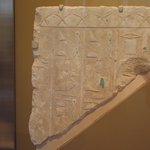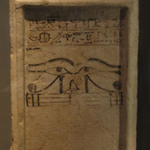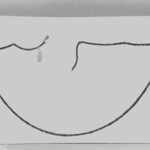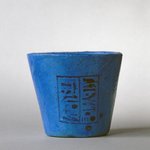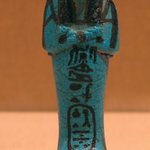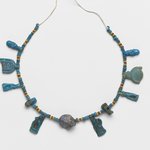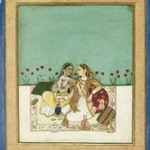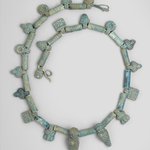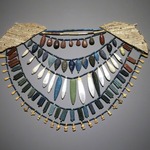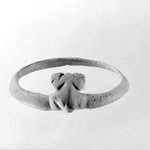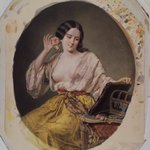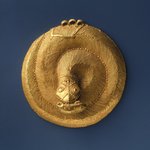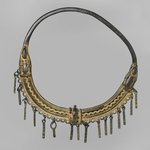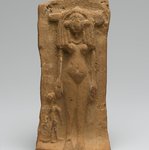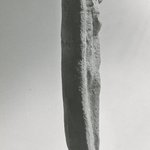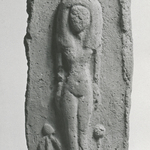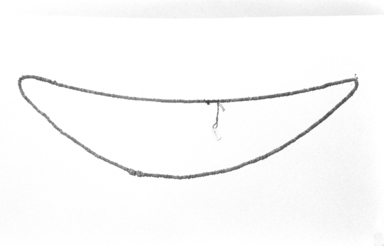
Necklace of Drum-Shaped Beads
Egyptian, Classical, Ancient Near Eastern Art
On View: Egyptian Orientation Gallery, 3rd Floor
Necklaces
Most ancient Egyptians owned at least one necklace.
The simplest examples were made of tiny beads of shell, bone, faience, metal, or glazed steatite. More complex versions had beads in the form of amulets, including uraeus-cobras, wedjat-eyes (the eye of the falcon-god Horus, symbolizing wholeness), scarabs (charms in the form of beetles), or images of gods such as Hathor. Individual beads as well as complete necklaces had significance. Beads reproducing fruits or flowers, such as the examples in this case, were believed to enhance fertility. Military officers presented fly necklaces to valiant soldiers to acknowledge their tenacity in battle.
Most ancient Egyptians owned at least one necklace.
The simplest examples were made of tiny beads of shell, bone, faience, metal, or glazed steatite. More complex versions had beads in the form of amulets, including uraeus-cobras, wedjat-eyes (the eye of the falcon-god Horus, symbolizing wholeness), scarabs (charms in the form of beetles), or images of gods such as Hathor. Individual beads as well as complete necklaces had significance. Beads reproducing fruits or flowers, such as the examples in this case, were believed to enhance fertility. Military officers presented fly necklaces to valiant soldiers to acknowledge their tenacity in battle.
MEDIUM
Faience
DATES
ca. 1514–1353 B.C.E.
DYNASTY
Dynasty 18
PERIOD
New Kingdom
DIMENSIONS
Approximate length: 36 5/8 in. (93 cm) (show scale)



COLLECTIONS
Egyptian, Classical, Ancient Near Eastern Art
ACCESSION NUMBER
14.629
CREDIT LINE
Gift of the Egypt Exploration Fund
PROVENANCE
Tomb 26, Sawama, Egypt; 1914, excavated by Gerald Avery Wainwright and Thomas Whittemore for the Egypt Exploration Society; 1914, gift of the Egypt Exploration Society to the Brooklyn Museum.
Provenance FAQ
EXHIBITIONS
MUSEUM LOCATION
This item is on view in Egyptian Orientation Gallery, 3rd Floor
CAPTION
Necklace of Drum-Shaped Beads, ca. 1514–1353 B.C.E. Faience, Approximate length: 36 5/8 in. (93 cm). Brooklyn Museum, Gift of the Egypt Exploration Fund, 14.629. Creative Commons-BY (Photo: Brooklyn Museum, CUR.14.629_NegL1008_29_print_bw.jpg)
IMAGE
overall, CUR.14.629_NegL1008_29_print_bw.jpg. Brooklyn Museum photograph, 2013
"CUR" at the beginning of an image file name means that the image was created by a curatorial staff member. These study images may be digital point-and-shoot photographs, when we don\'t yet have high-quality studio photography, or they may be scans of older negatives, slides, or photographic prints, providing historical documentation of the object.
RIGHTS STATEMENT
Creative Commons-BY
You may download and use Brooklyn Museum images of this three-dimensional work in accordance with a Creative Commons license. Fair use, as understood under the United States Copyright Act, may also apply.
Please include caption information from this page and credit the Brooklyn Museum. If you need a high resolution file, please fill out our online application form (charges apply).
For further information about copyright, we recommend resources at the United States Library of Congress, Cornell University, Copyright and Cultural Institutions: Guidelines for U.S. Libraries, Archives, and Museums, and Copyright Watch.
For more information about the Museum's rights project, including how rights types are assigned, please see our blog posts on copyright.
If you have any information regarding this work and rights to it, please contact copyright@brooklynmuseum.org.
RECORD COMPLETENESS
Not every record you will find here is complete. More information is available for some works than for others, and some entries have been updated more recently. Records are frequently reviewed and revised, and we welcome any additional information you might have.
